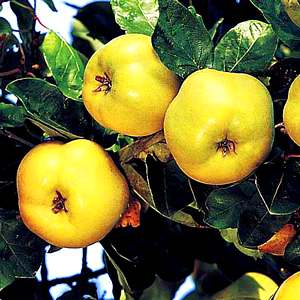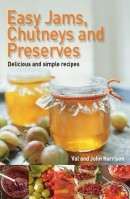Quince Trees
Fruit Plants, Fruit Trees, Fruit Bushes & Nut Trees

Quince are easy to grow and the fruit has a unique perfume and flavour that complements other fruits like apples or pears in pies, jellies etc.
There are several varieties available from plant nurseries, some of them suitable for container growing. Be sure to buy the right size of tree for your growing space.
There is a growing guide on quince here: Growing Quince
Quince Tree - Vranja
The large, sweet, pear-shaped fruits of Vranja ripen in mid-autumn and make excellent jellies and preserves. Alternatively, you'll find a few slices in an apple pie will improve it immeasurably! The plants themselves are highly decorative trained into a fan against a wall, the blossom is very attractive, and they make ideal pollinators for pears. Self-fertile. RHS Award of Garden Merit winner. Grown on Quince A rootstock. Pollination group 4. Supplied as a bare root tree.
Vranja
The large, sweet, pear-shaped fruits of Vranja ripen in mid-autumn and make excellent jellies and preserves. Alternatively, you'll find a few slices in an apple pie will improve it immeasurably! The plants themselves are highly decorative trained into a fan against a wall, the blossom is very attractive, and they make ideal pollinators for pears. Self-fertile. RHS Award of Garden Merit winner. Grown on Quince A rootstock. Pollination group 4.
Quince : Vranja
An attractive tree with beautiful rounded silver leaves and large green-pink flowers, that will produce large pear shaped fruits capable of growing up to 1lb in weight.
Quince : Lescovac
Attractive with beautiful round, silver leaves and large, green-pink flowers that produce large fruits. Quince Lescovaeks cannot be eaten raw, but makes excellent jellies or enhances the flavour of an apple pie by adding a few slices before cooking.
Plum 'Seneca'
Plum 'Seneca' produces red skinned fruits with a free stone that falls easily away from the delicious bright yellow-orange flesh. This delicious dessert plum is perfect for extending the season when planted with earlier fruiting varieties, as the fruits of 'Seneca' will not ripen until mid September.
Grafted onto a semi-dwarfing rootstock, to produce a compact, productive tree. Plum 'Seneca' is self-fertile and therefore does not require a pollination companion. Height and spread: 2.5m (8'). Rootstock: St. Julien A.
Copyright Information: The Images, seed Descriptions and Titles on this page are used with permission of the copyright holders - Dobies Seeds, Suttons Seeds, Thompson & Morgan



